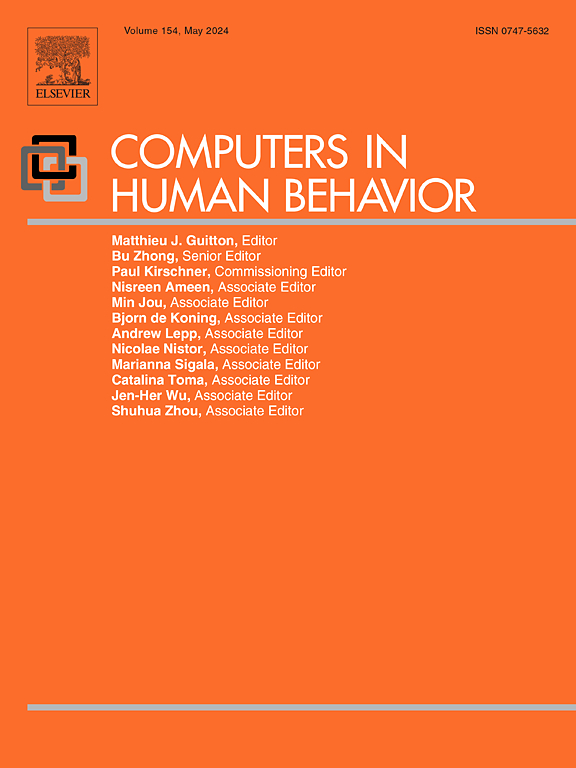虚拟现实与大众媒体宣传的经典表现:以环境保护为例的有效性和心理机制
IF 9
1区 心理学
Q1 PSYCHOLOGY, EXPERIMENTAL
引用次数: 0
摘要
虚拟现实(VR)和360°VR视频由于其沉浸式的潜力,对媒体广告活动越来越重要。这尤其适用于许多接受者难以理解的话题,包括环境保护问题。然而,与更传统的媒体相比,之前关于360°VR视频对用户环境态度和行为意图影响的研究得出了不同的结果,并且在考虑呈现模式和中介机制方面缺乏一致的方法。为了解决这种情况,我们比较了360°VR视频与2D视频、音频和印刷文本的效果,并研究了空间存在、叙事运输和影响的潜在作用。我们以四种展示方式中的一种,向参与者展示了三部环保纪录片,让他们对自己的经历、环保和捐赠意愿进行评价。我们分析了128名参与者的数据,研究了呈现模式(360°VR视频vs. 2D视频vs.音频vs.文本)对空间存在、叙事传递、积极和消极影响的主要影响,以及呈现模式通过这四种心理机制对参与者的环境和捐赠意愿的间接影响。结果表明,360°VR视频情境诱发的空间临场感、叙事传递感和积极情绪显著强于其他情境。我们还发现陈述方式对环境保护和通过叙事运输的捐赠意愿有显著的间接影响。这些结果强调了虚拟营销活动叙事的相关性,以及在虚拟现实研究中考虑中介的必要性。本文章由计算机程序翻译,如有差异,请以英文原文为准。
Virtual reality versus classic presentations of mass media campaigns: Effectiveness and psychological mechanisms using the example of environmental protection
Virtual reality (VR) and 360° VR videos are increasingly important for media advertising campaigns due to their immersive potential. This particularly applies to topics many recipients find difficult to grasp, including environmental protection issues. However, previous research on the effects of 360° VR videos on users' environmental attitudes and behavioural intentions, compared to more traditional media, came to mixed results and lacked a consistent approach regarding the considered presentation modes and mediating mechanisms. To address this circumstance, we compare the effects of 360° VR videos with 2D video, audio, and printed text, and examine the potential roles of spatial presence, narrative transportation, and affect. We presented three environmental protection documentaries in one of the four presentation modes to the participants, who then rated their experiences as well as their environmental protection and donation intentions. We analysed data from 128 participants and examined the main effects of presentation mode (360° VR video vs. 2D video vs. audio vs. text) on spatial presence, narrative transportation, and positive and negative affect as well as indirect effects of presentation mode on participants’ environmental and donation intentions via these four psychological mechanisms. Results revealed that the 360° VR video condition evoked significantly stronger feelings of spatial presence, narrative transportation, and positive affect than the other conditions. We also found significant indirect effects of presentation mode on environmental protection and donation intentions via narrative transportation. These results emphasise the relevance of the narrative for virtual marketing campaigns and the need to consider mediators in VR research.
求助全文
通过发布文献求助,成功后即可免费获取论文全文。
去求助
来源期刊

Computers in Human Behavior
Multiple-
CiteScore
19.10
自引率
4.00%
发文量
381
审稿时长
40 days
期刊介绍:
Computers in Human Behavior is a scholarly journal that explores the psychological aspects of computer use. It covers original theoretical works, research reports, literature reviews, and software and book reviews. The journal examines both the use of computers in psychology, psychiatry, and related fields, and the psychological impact of computer use on individuals, groups, and society. Articles discuss topics such as professional practice, training, research, human development, learning, cognition, personality, and social interactions. It focuses on human interactions with computers, considering the computer as a medium through which human behaviors are shaped and expressed. Professionals interested in the psychological aspects of computer use will find this journal valuable, even with limited knowledge of computers.
 求助内容:
求助内容: 应助结果提醒方式:
应助结果提醒方式:


